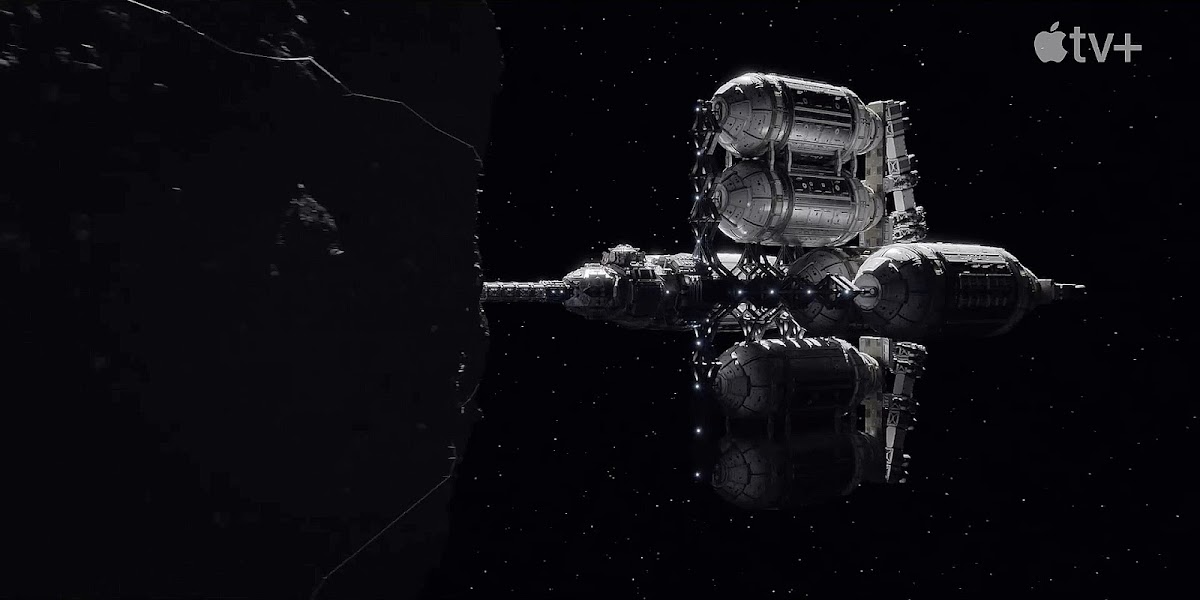Kuznetsov Station on Goldilocks in orbit around Mars in season 5:
Happy Valley Base on Mars in season 4:
Mars orbital station Phoenix in season 4:
 Pallas, located in the Main Asteroid Belt between the orbits of Mars and Jupiter, is the third-largest asteroid in the Solar System (~512km in diameter). It has 22% the mass of Ceres, the largest asteroid in the Solar System, and gravity of 0.021g (2,1% of the gravity force on Earth). With an orbital inclination of 34.8°, Pallas's orbit is unusually highly inclined to the plane of the Asteroid Belt, making Pallas harder to reach by spacecraft.
Pallas, located in the Main Asteroid Belt between the orbits of Mars and Jupiter, is the third-largest asteroid in the Solar System (~512km in diameter). It has 22% the mass of Ceres, the largest asteroid in the Solar System, and gravity of 0.021g (2,1% of the gravity force on Earth). With an orbital inclination of 34.8°, Pallas's orbit is unusually highly inclined to the plane of the Asteroid Belt, making Pallas harder to reach by spacecraft.
 Deimos is the smaller and outer of the two natural satellites of Mars, the other being Phobos. Deimos, likely an asteroid captured by Mars' gravity, is highly non-spherical with a mean diameter of 12.5 km (about 57% the size of Phobos) and it orbits 23,460 km from Mars (Deimos' orbit is slowly getting larger and it is expected to eventually escape Mars' gravity). Escape velocity from the surface of Deimos is only 5.6 m/s so a human can basically jump off of it.
Deimos is the smaller and outer of the two natural satellites of Mars, the other being Phobos. Deimos, likely an asteroid captured by Mars' gravity, is highly non-spherical with a mean diameter of 12.5 km (about 57% the size of Phobos) and it orbits 23,460 km from Mars (Deimos' orbit is slowly getting larger and it is expected to eventually escape Mars' gravity). Escape velocity from the surface of Deimos is only 5.6 m/s so a human can basically jump off of it.
 Yesterday Apple TV+ released yet another video revealing more details about the upcoming season 4 of For All Mankind alternate history sci-fi TV series. As the co-creator of the series Ben Nedivi states in this featurette: "This season is really about the building of a new civilization on Mars. Last year in season 3 you saw the first explorers arrive on Mars. This season you're actually seeing hundreds of people up there and you're seeing, how civilization becomes civilization".
Yesterday Apple TV+ released yet another video revealing more details about the upcoming season 4 of For All Mankind alternate history sci-fi TV series. As the co-creator of the series Ben Nedivi states in this featurette: "This season is really about the building of a new civilization on Mars. Last year in season 3 you saw the first explorers arrive on Mars. This season you're actually seeing hundreds of people up there and you're seeing, how civilization becomes civilization".
 Yesterday Apple TV+ published a yet unlisted trailer for season 4 of For All Mankind alternate history sci-fi TV series, revealing asteroid mining will play a major role in season 4, set in 2003. The trailer also revealed more details about the soon-to-be "self-sustaining" international Happy Valley base on Mars, first depicted in the first teaser for season 4 a month ago.
Yesterday Apple TV+ published a yet unlisted trailer for season 4 of For All Mankind alternate history sci-fi TV series, revealing asteroid mining will play a major role in season 4, set in 2003. The trailer also revealed more details about the soon-to-be "self-sustaining" international Happy Valley base on Mars, first depicted in the first teaser for season 4 a month ago.